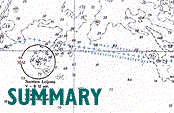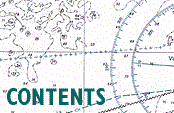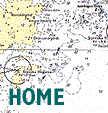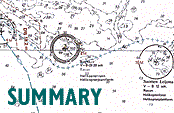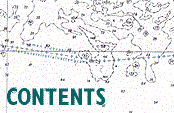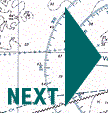 |
3.4.1. General
The requirements for emergency and life-saving equipment are governed in detail by the SOLAS convention. The vessel was specified to be built to SOLAS 1974 but the first certificate was issued under SOLAS 1960. The Finnish Maritime Administration surveyed the vessel for compliance with the requirements whilst she flew the Finnish flag, and Bureau Veritas surveyed on behalf of the Estonian Administration during the following period. The surveys were annual and the one conducted on change of flag was extensive.
3.4.2 Lifeboats and rafts
The vessel was equipped with ten motor-driven lifeboats of open type and of fibreglass construction. The five boats on the port side were approved for in total 368 people and the five on the starboard side for in total 324 people. One of the boats on the starboard side was a man-overboard (MOB) rescue boat. Two boats were equipped with searchlights. The boats were suspended under davits on deck 8. Embarkation was from deck 7.
 The vessel carried 63 inflatable rafts, approved for a total of 1575 people. They were packed in containers stowed on decks 7 and 8 and were equipped with hydrostatic release mechanisms. Twelve rafts were equipped to be launched by davits, four of which were installed on deck 7. The remaining rafts were intended to be dropped into the sea. With one exception, the rafts were manufactured in 1980 and delivered to the VIKING SALLY during construction. They were serviced once a year in rotation. The service was carried out by a Swedish company, authorised by the manufacturer and approved by the Swedish Maritime Administration. The vessel carried 63 inflatable rafts, approved for a total of 1575 people. They were packed in containers stowed on decks 7 and 8 and were equipped with hydrostatic release mechanisms. Twelve rafts were equipped to be launched by davits, four of which were installed on deck 7. The remaining rafts were intended to be dropped into the sea. With one exception, the rafts were manufactured in 1980 and delivered to the VIKING SALLY during construction. They were serviced once a year in rotation. The service was carried out by a Swedish company, authorised by the manufacturer and approved by the Swedish Maritime Administration.
 Lifeboats and rafts provided on board satisfied the SOLAS 1974 requirements as to number and standard. Lifeboats and rafts provided on board satisfied the SOLAS 1974 requirements as to number and standard.
 The lifeboats and rafts were surveyed every year in conjunction with the issuance of the Passenger Ship Safety Certificate. The last survey was in June 1994. The lifeboats and rafts were surveyed every year in conjunction with the issuance of the Passenger Ship Safety Certificate. The last survey was in June 1994.
 The vessel also carried six rigid floats on the uppermost deck. They were able to support 20 persons each. They were installed to comply with the SOLAS 1960 requirements for “buoyant apparatuses”. The vessel also carried six rigid floats on the uppermost deck. They were able to support 20 persons each. They were installed to comply with the SOLAS 1960 requirements for “buoyant apparatuses”.
 All launching instructions had been renewed during the change of flag to reflect the new languages to be covered. All launching instructions had been renewed during the change of flag to reflect the new languages to be covered.
3.4.3 Lifebuoys and lifejackets
The vessel was equipped with 18 life-buoys, nine of them with self-activating lights. One lifebuoy on each side of the ship was equipped with a lifeline and with self-activating light and smoke signals.
 There were 2298 lifejackets for adults and 200 lifejackets for children on board. All the jackets were equipped with whistles. There were no lights on the lifejackets. This was not required on vessels trading on short international voyages (3.6.1). There were 2298 lifejackets for adults and 200 lifejackets for children on board. All the jackets were equipped with whistles. There were no lights on the lifejackets. This was not required on vessels trading on short international voyages (3.6.1).
 On the open passage on deck 7, rescue stations and bins containing lifejackets were located on both sides of the ship. There were also lifejackets on the bridge and in the engine control room for the watch personnel. Donning instructions were placed where the lifejackets were stowed and in all passenger cabins. Crew members were assigned to assist passengers in putting on the lifejackets. On the open passage on deck 7, rescue stations and bins containing lifejackets were located on both sides of the ship. There were also lifejackets on the bridge and in the engine control room for the watch personnel. Donning instructions were placed where the lifejackets were stowed and in all passenger cabins. Crew members were assigned to assist passengers in putting on the lifejackets.
3.4.4 Emergency beacons
The ESTONIA carried two emergency beacons (EPIRBs) of type Kannad 406F.
 The last check of the radio beacons was reported to have been made about one week prior to the accident by the radio operator. The check confirmed that the EPIRBs were in full working order. The last check of the radio beacons was reported to have been made about one week prior to the accident by the radio operator. The check confirmed that the EPIRBs were in full working order.
3.4.5 Emergency alarm systems
The ship had an alarm system incorporating 197 alarm bells and 11 alarm sirens. Each alarm unit was equipped with a fuse, whereby a fault in a single alarm would not disable the rest of the system.
 The alarm system was functionally checked once a week. The audibility of the system against the background noise in the accommodation areas had been judged to be adequate although no documented measurements had been made. The alarm system was functionally checked once a week. The audibility of the system against the background noise in the accommodation areas had been judged to be adequate although no documented measurements had been made.
 Alarms were installed in the passageways and public spaces as well as in non-passenger areas. Alarms were installed in the passageways and public spaces as well as in non-passenger areas.
 The alarm system operated on the 220 V system and was connected to the main and emergency generator systems. The alarm system was not powered by the emergency accumulators. The alarm system operated on the 220 V system and was connected to the main and emergency generator systems. The alarm system was not powered by the emergency accumulators.
 Alarm buttons were installed on every deck, including the sections and work rooms of the crew. By pressing an alarm button an audible signal was triggered on the navigation bridge and an indicator showed which section the alarm was coming from. In case of no reaction within 30 seconds, the alarm in the entire vessel was automatically activated. The receipt of one signal on the bridge did not prevent the receipt of additional signals from other alarm buttons. Alarm buttons were installed on every deck, including the sections and work rooms of the crew. By pressing an alarm button an audible signal was triggered on the navigation bridge and an indicator showed which section the alarm was coming from. In case of no reaction within 30 seconds, the alarm in the entire vessel was automatically activated. The receipt of one signal on the bridge did not prevent the receipt of additional signals from other alarm buttons.
 The vessel had a fire and smoke detection system with a total of 1212 sensors. The sensors on the car deck and in the engine and boiler rooms were smoke-sensitive whereas the other sensors were heat-sensitive, set to give alarm at a temperature of 65°C. The vessel had a fire and smoke detection system with a total of 1212 sensors. The sensors on the car deck and in the engine and boiler rooms were smoke-sensitive whereas the other sensors were heat-sensitive, set to give alarm at a temperature of 65°C.
 The public address system was operated from the navigation bridge and also from the information desk. The microphone on the bridge had priority over the one at the information desk. The public address system was operated from the navigation bridge and also from the information desk. The microphone on the bridge had priority over the one at the information desk.
 A separate personal paging system for crew members was installed. A separate personal paging system for crew members was installed.
3.4.6 Escape routes and instructions
The escape routes led to 18 rescue stations located on deck 7. The routes were marked with signs on the walls and fluorescent tape along the corridors.
 Instructions for handling life-saving equipment were posted at the rescue stations. The detailed instructions for the crew were given in the Training Manual and Safety Manual, described in 4.3. Instructions for handling life-saving equipment were posted at the rescue stations. The detailed instructions for the crew were given in the Training Manual and Safety Manual, described in 4.3.
3.4.7 Passenger information
Each passenger cabin was supplied with an instruction pamphlet in Estonian, Swedish and English on safety measures, describing how to act in the event of an emergency. There was also an evacuation scheme posted in each cabin, indicating the escape routes and the particular rescue station for the passengers accommodated in that cabin. The exits and emergency exits were marked by arrows in passageways, on staircase landings and in recreation areas as well as by signboards on exit doors.
 In any distress situation, besides alarms given only to the crew, the passengers should according to the Safety Manual be given general information and instructions through the public address system. In any distress situation, besides alarms given only to the crew, the passengers should according to the Safety Manual be given general information and instructions through the public address system.
|
 |
 |
3.6.1 Compliance with international conventions
The ship was built to comply with the conventions mentioned in 3.1.1.
 The 1974 version of the SOLAS convention entered into force internationally on 25 May 1980 and in Finland on 21 February 1981. The 1960 version of SOLAS was in force at the time of the vessel's building. The 1973 MARPOL Convention and the related protocol of 1978 did not come into force internationally until October 1983 as far as the oil pollution annex is concerned. The building specification of 1979 included these conventions in expectation of their entering into force. The 1974 version of the SOLAS convention entered into force internationally on 25 May 1980 and in Finland on 21 February 1981. The 1960 version of SOLAS was in force at the time of the vessel's building. The 1973 MARPOL Convention and the related protocol of 1978 did not come into force internationally until October 1983 as far as the oil pollution annex is concerned. The building specification of 1979 included these conventions in expectation of their entering into force.
 Compliance with relevant requirements of the conventions was verified in the stipulated certificates. The first Passenger Ship Safety Certificate (Supplement) to verify compliance with Chapters II-1,II-2, III and IV of SOLAS was issued by the Finnish Maritime Administration on 27 June 1980. It contained a restriction of the permitted number of passengers to 1100 as the accommodation spaces were not fully completed. At the same time a restriction was ordered that the vessel was not allowed to sail more than 20 nautical miles from the nearest land. The first certificate was shortly thereafter replaced by a new one, dated 16 July 1980, permitting 2000 passengers. The certificates were valid for “short international voyages”, defined in the SOLAS convention as a voyage of no more than 600 nautical miles and during which the ship is no more than 200 nautical miles from a port or place where passengers and crew can be placed in safety. In some later certificates, the traffic area was defined as ”short international voyages between Finland and Sweden”. Translated into Swedish and Finnish, the wording corresponds in English to “coastal traffic between Finland and Sweden”. This wording, however, does not refer to the SOLAS Convention but to the Finnish national law. In coastal traffic, where the ship was sailing all the time, the requirements as to officers' qualifications were lower than on vessels on short international voyages. Compliance with relevant requirements of the conventions was verified in the stipulated certificates. The first Passenger Ship Safety Certificate (Supplement) to verify compliance with Chapters II-1,II-2, III and IV of SOLAS was issued by the Finnish Maritime Administration on 27 June 1980. It contained a restriction of the permitted number of passengers to 1100 as the accommodation spaces were not fully completed. At the same time a restriction was ordered that the vessel was not allowed to sail more than 20 nautical miles from the nearest land. The first certificate was shortly thereafter replaced by a new one, dated 16 July 1980, permitting 2000 passengers. The certificates were valid for “short international voyages”, defined in the SOLAS convention as a voyage of no more than 600 nautical miles and during which the ship is no more than 200 nautical miles from a port or place where passengers and crew can be placed in safety. In some later certificates, the traffic area was defined as ”short international voyages between Finland and Sweden”. Translated into Swedish and Finnish, the wording corresponds in English to “coastal traffic between Finland and Sweden”. This wording, however, does not refer to the SOLAS Convention but to the Finnish national law. In coastal traffic, where the ship was sailing all the time, the requirements as to officers' qualifications were lower than on vessels on short international voyages.
 The permissible number of passengers was also dealt with in a separate resolution by the Finnish Administration on 26 May 1980. This resolution stated that the permitted number of passengers should be 2000, taking into account the requirements of Chapter III of SOLAS. The permissible number of passengers was also dealt with in a separate resolution by the Finnish Administration on 26 May 1980. This resolution stated that the permitted number of passengers should be 2000, taking into account the requirements of Chapter III of SOLAS.
 For reasons of comfort the Estline operators had lowered the number of passengers. The limit was set at 1456 bookable passengers, compatible with the available number of beds and sleeping seats installed. In the summer season an additional 100 deck passengers were allowed. This number did not include the crew or any non-paying persons on board. For reasons of comfort the Estline operators had lowered the number of passengers. The limit was set at 1456 bookable passengers, compatible with the available number of beds and sleeping seats installed. In the summer season an additional 100 deck passengers were allowed. This number did not include the crew or any non-paying persons on board.
 The Passenger Ship Safety Certificate was renewed every year in compliance with the rules. The certificates were issued in the format stipulated by the 1974 SOLAS Convention from 1981 onwards. An exemption certificate was issued for the radiotelegraph equipment in the certificate issued in October 1992. This exemption certificate restricted the operation of the vessel to voyages within the Baltic Sea in accordance with the provisions of Regulation 5 of Chapter IV of the 1974 SOLAS Convention. This exemption was not extended when the ship's flag was changed to Estonian as the vessel had from that time again a radio officer. The Passenger Ship Safety Certificate was renewed every year in compliance with the rules. The certificates were issued in the format stipulated by the 1974 SOLAS Convention from 1981 onwards. An exemption certificate was issued for the radiotelegraph equipment in the certificate issued in October 1992. This exemption certificate restricted the operation of the vessel to voyages within the Baltic Sea in accordance with the provisions of Regulation 5 of Chapter IV of the 1974 SOLAS Convention. This exemption was not extended when the ship's flag was changed to Estonian as the vessel had from that time again a radio officer.
 From the beginning the vessel had an International Load Line Certificate, the first one based on a survey for freeboard carried out by Bureau Veritas, dated 23 April 1980. The certificate was issued in accordance with the 1966 version of the ILL Convention and was valid for five years, subject to periodic inspections. The certificates issued in 1985 and 1990 by the Finnish Maritime Administration were based on surveys carried out by Bureau Veritas. From the beginning the vessel had an International Load Line Certificate, the first one based on a survey for freeboard carried out by Bureau Veritas, dated 23 April 1980. The certificate was issued in accordance with the 1966 version of the ILL Convention and was valid for five years, subject to periodic inspections. The certificates issued in 1985 and 1990 by the Finnish Maritime Administration were based on surveys carried out by Bureau Veritas.
3.6.2 Certificates valid at the time of the accident
International certificates cease to be valid when a ship changes flag. New certificates were therefore issued when the ship became Estonian in January 1993. Two new classification certificates (hull, machinery) were issued by Bureau Veritas in January 1993. The Estonian Maritime Administration had authorised Bureau Veritas in August 1992 to perform the surveys on its behalf and to issue certificates under the 1966 Load Line Convention, the 1974 SOLAS Convention, the 1973 MARPOL Convention and the 1969 Tonnage Convention. The status of the certificates at the time of the accident was as follows.
 Passenger Ship Safety Certificate. As a new trim and stability manual was under development, the vessel carried an interim Passenger Ship Safety Certificate, issued on 26 June 1994. Passenger Ship Safety Certificate. As a new trim and stability manual was under development, the vessel carried an interim Passenger Ship Safety Certificate, issued on 26 June 1994.
 Load Line Certificate. For the same reason the Load Line Certificate was interim, issued on 9 September 1994. Load Line Certificate. For the same reason the Load Line Certificate was interim, issued on 9 September 1994.
 International Oil Pollution Prevention Certificate. A conditional IOPP certificate was issued by Bureau Veritas on 14 January 1993. The validity was conditional on the issuance of a Passenger Ship Safety Certificate. International Oil Pollution Prevention Certificate. A conditional IOPP certificate was issued by Bureau Veritas on 14 January 1993. The validity was conditional on the issuance of a Passenger Ship Safety Certificate.
 International Tonnage Certificate. Bureau Veritas issued, on behalf of the Estonian Government, a tonnage certificate under the Tonnage Convention of 1969. The certificate valid at the time of the accident was dated 29 August 1994. International Tonnage Certificate. Bureau Veritas issued, on behalf of the Estonian Government, a tonnage certificate under the Tonnage Convention of 1969. The certificate valid at the time of the accident was dated 29 August 1994.
 At the request of the owners Bureau Veritas had also issued a Cyprus tonnage certificate, dated 8 June 1993, according to the Cyprus Merchant Shipping Regulations requirements. Bureau Veritas also issued, under the same authority, a Certificate of Survey pursuant to the Republic of Cyprus Merchant Shipping Law of 1963. At the request of the owners Bureau Veritas had also issued a Cyprus tonnage certificate, dated 8 June 1993, according to the Cyprus Merchant Shipping Regulations requirements. Bureau Veritas also issued, under the same authority, a Certificate of Survey pursuant to the Republic of Cyprus Merchant Shipping Law of 1963.
 The valid certificates at the time of the accident are shown in the Supplement. The valid certificates at the time of the accident are shown in the Supplement.
3.6.3 Collision bulkhead compliance
The SOLAS Convention requires passenger ships to have a collision bulkhead, and an upper extension of the collision bulkhead in ships with long forward superstructure, located at a distance from the forward perpendicular of minimum 5 per cent of the length of the ship between perpendiculars and maximum 5 per cent of the length of the ship plus 3 m. This requirement was formulated at an early stage and remained basically unchanged during the further development of the SOLAS Convention. However, in the 1981 Amendments to SOLAS 1974, which entered into force on 1 September 1984, the rule was extended to include cargo ships and modified to allow taking into account a bulbous bow. This was done by adding wording permitting the datum line from which the position of the collision bulkhead is determined to be moved forward from the forward perpendicular by half the length of the bulbous bow, by 1.5 per cent of the length of the ship or by 3 m, whichever was the shortest. The 1981 Amendments considered also for the first time especially the use of the ramp as an upper extension of the collision bulkhead. It was stated that the part of the ramp which is more than 2.3 m above the bulkhead may extend forward of the limit specified above.
 The position of the bow ramp of ESTONIA did not satisfy the SOLAS requirements for an upper extension of the collision bulkhead. No exemption was issued. Such an exemption could be given on condition that the vessel in the course of its voyages did not proceed more than 20 nautical miles from the nearest land. The position of the bow ramp of ESTONIA did not satisfy the SOLAS requirements for an upper extension of the collision bulkhead. No exemption was issued. Such an exemption could be given on condition that the vessel in the course of its voyages did not proceed more than 20 nautical miles from the nearest land.
 The building specification stated that a “partial collision door” was “for the intended service not required by the Finnish Board of Navigation”. An upper extension of the collision bulkhead, complying with the SOLAS 1974 rules, should have been located minimum 4.27 m and maximum 7.27 m aft of the position of the lower end of the ramp (Figure 3.13). Complying with the 1981 Amendments to SOLAS 1974 the upper extension of the collision bulkhead could have been about 2 m further forward. The building specification stated that a “partial collision door” was “for the intended service not required by the Finnish Board of Navigation”. An upper extension of the collision bulkhead, complying with the SOLAS 1974 rules, should have been located minimum 4.27 m and maximum 7.27 m aft of the position of the lower end of the ramp (Figure 3.13). Complying with the 1981 Amendments to SOLAS 1974 the upper extension of the collision bulkhead could have been about 2 m further forward.
Figure 3.13 Positions of the upper extension of the collision bulkhead complying with the SOLAS 1974 rules and 1981 Amendments.

The surveys under the SOLAS convention were, during the period under Finnish flag, carried out by the Finnish Board of Navigation. Bureau Veritas had no authorisation to survey the vessel for compliance with the SOLAS Convention. When Bureau Veritas surveyed the vessel for change of flag this was done in accordance with the requirements to the extent of a periodic survey, which did not include examination of construction drawings. The location of the extension of the collision bulkhead was thus not considered during this survey.
 The background and likely circumstances related to the location of the ramp are covered in Chapter 18. The background and likely circumstances related to the location of the ramp are covered in Chapter 18.
3.6.4 Statutory inspections
The inspections of the vessel regarding compliance with international conventions and national regulations were, during the period under Finnish flag, carried out by the Finnish Maritime Administration except for compliance with the International Load Line Convention and the MARPOL Convention. The authority to perform surveys under these conventions was given to Bureau Veritas.
 Bureau Veritas carried out the first load line survey at the time of delivery of the vessel. The compliance with the load line convention requirements was verified at the stipulated annual surveys and the five-year periodic surveys. The load line certificate was renewed when the ship changed flag in January 1993. The last annual inspection for verification of the load line certificate was carried out on 9 September 1994. Bureau Veritas carried out the first load line survey at the time of delivery of the vessel. The compliance with the load line convention requirements was verified at the stipulated annual surveys and the five-year periodic surveys. The load line certificate was renewed when the ship changed flag in January 1993. The last annual inspection for verification of the load line certificate was carried out on 9 September 1994.
The Finnish administration
Between 1980 and 1992, the Finnish authorities carried out annual seaworthiness surveys, machinery surveys and certain other surveys required by Finnish maritime legislation. On the basis of these surveys, the Finnish Maritime Administration annually issued the vessel a SOLAS Passenger Ship Safety Certificate demonstrating that the vessel met the requirements of the SOLAS Convention.
 However, the records of the seaworthiness surveys carried out by the Finnish authorities regularly include a note that the surveyors have not carried out surveys of the hull or boiler, since these were done by the classification society. However, the records of the seaworthiness surveys carried out by the Finnish authorities regularly include a note that the surveyors have not carried out surveys of the hull or boiler, since these were done by the classification society.
 In Finland, a Commercial Vessel Decree was originally issued in 1920 and reformed in 1924. According to section 45 of both decrees, a vessel is exempt from a hull survey if it has a valid classification certificate issued by a classification society approved by the Finnish Maritime Administration. On 18 January 1921, when the decree entered into force, the Administration approved certain classification societies, among them Bureau Veritas, so that certificates issued by them exempted the vessel from the Administration's hull survey. In Finland, a Commercial Vessel Decree was originally issued in 1920 and reformed in 1924. According to section 45 of both decrees, a vessel is exempt from a hull survey if it has a valid classification certificate issued by a classification society approved by the Finnish Maritime Administration. On 18 January 1921, when the decree entered into force, the Administration approved certain classification societies, among them Bureau Veritas, so that certificates issued by them exempted the vessel from the Administration's hull survey.
 Before issuing the SOLAS Passenger Ship Safety Certificate, the Finnish Maritime Administration verified that the classification certificate was valid and that the classification society had carried out the hull survey. Before issuing the SOLAS Passenger Ship Safety Certificate, the Finnish Maritime Administration verified that the classification certificate was valid and that the classification society had carried out the hull survey.
 Bureau Veritas also carried out machinery surveys on the vessel. However, the focus of the classification society surveys had been on issues related to the soundness of the machinery, while the Finnish Maritime Administration surveys concentrated on equipment, for example fire safety equipment. Bureau Veritas also carried out machinery surveys on the vessel. However, the focus of the classification society surveys had been on issues related to the soundness of the machinery, while the Finnish Maritime Administration surveys concentrated on equipment, for example fire safety equipment.
 In 1983, a new decree was issued on ship surveys, which superseded the 1920 Commercial Vessel Decree. The new decree lacks provisions comparable to section 45 in the 1920 Decree. The practice of accepting classification society inspections as part of the basis for issuing a Passenger Ship Safety Certificate has, however, been retained under the new decree. In 1983, a new decree was issued on ship surveys, which superseded the 1920 Commercial Vessel Decree. The new decree lacks provisions comparable to section 45 in the 1920 Decree. The practice of accepting classification society inspections as part of the basis for issuing a Passenger Ship Safety Certificate has, however, been retained under the new decree.
The Estonian administration
By an agreement signed on 18 August, 1992, the Estonian administration authorised Bureau Veritas to perform the statutory inspections on Estonian vessels being classed with that society. This explicitly included inspections to verify compliance with the SOLAS, MARPOL and Load Line Conventions. Bureau Veritas accordingly performed inspections and issued new certificates as listed in 3.6.2 above.
 Based on an agreement between Bureau Veritas and the technical managers it was also arranged for certain items not covered by the conventions to be taken care of. Lifts for instance were inspected by the relevant Swedish authority. Based on an agreement between Bureau Veritas and the technical managers it was also arranged for certain items not covered by the conventions to be taken care of. Lifts for instance were inspected by the relevant Swedish authority.
 The Estonian administration issued the Certificate for safe minimum manning of the vessel. The Estonian authorities also made their own inspection of crew accommodation arrangements and sanitary installations. The Estonian administration issued the Certificate for safe minimum manning of the vessel. The Estonian authorities also made their own inspection of crew accommodation arrangements and sanitary installations.
3.6.5 Classification society inspections
Bureau Veritas inspected the vessel for compliance with class requirements in accordance with their rules and standards. The main inspection period was five years and the items to be inspected were divided so that about one fifth of the total inspection work was carried out each year on a rolling schedule. The bow area was inspected under this programme in 1983, 1988 and 1993. No discrepancies were recorded during any of these inspections.
|
 |
 |
3.7.1 General observations
The vessel was equipped with two controllable-pitch propellers, two rudders and two bow thrusters. It was designed for berthing and unberthing without external assistance. Senior officers who have served on board the vessel have generally expressed satisfaction with the handling characteristics of the vessel. The fact that the navigation bridge was located aft of the front bulkhead of the superstructure in such a way that the bow of the ship was not visible from the bridge has not been reported as a disadvantage.
3.7.2 Speed resources
The ship had a contractual speed of 21 knots at 90 per cent of maximum continuous rating. The practical maximum operating speed of the ship in later years was considered to be 19 knots. This was adequate for the service in which the ship was engaged. To meet the timetable, the average speed in open sea was required to be about 17.0 knots on eastbound voyages and about 16.5 knots on westbound voyages.
3.7.3 Stability documentation
The ESTONIA was built to satisfy the two-compartment-damage stability requirements specified for passenger ships in the 1974 SOLAS Convention. In the shipyard's trim and stability book, seven loading conditions were given in which the damage stability conditions were checked and found adequate. These included residual metacentric height, heel angle and freeboard to the margin line.
 A new trim and stability manual was developed, based on inclination tests carried out in Turku on 11 January 1991. The new manual was approved by the Finnish Maritime Administration. It was subsequently approved by Bureau Veritas in conjunction with the change of flag. A new trim and stability manual was developed, based on inclination tests carried out in Turku on 11 January 1991. The new manual was approved by the Finnish Maritime Administration. It was subsequently approved by Bureau Veritas in conjunction with the change of flag.
 The Commission has noted that at the inclination test, the ship's centre of gravity was positioned to starboard to such an extent that the port-side heeling tank was filled with about 115 t more water than the starboard tank in upright condition. The load cases in the trim and stability manual, however, include the heeling tanks as being either both empty or both full. The Commission has noted that at the inclination test, the ship's centre of gravity was positioned to starboard to such an extent that the port-side heeling tank was filled with about 115 t more water than the starboard tank in upright condition. The load cases in the trim and stability manual, however, include the heeling tanks as being either both empty or both full.
 Damage stability was checked by Bureau Veritas for compliance with the requirements in the 1992 Amendments to SOLAS and it was concluded that the vessel also complied with the new requirements for existing vessels, i.e. the damage stability index met to 95 % that required for new passenger ships. These additional damage cases were intended to be incorporated in the trim and stability manual and were approved separately on 16 September 1994. Damage stability was checked by Bureau Veritas for compliance with the requirements in the 1992 Amendments to SOLAS and it was concluded that the vessel also complied with the new requirements for existing vessels, i.e. the damage stability index met to 95 % that required for new passenger ships. These additional damage cases were intended to be incorporated in the trim and stability manual and were approved separately on 16 September 1994.
 In normal sailing condition the vessel had a transverse metacentric height of about 1.2 m in combination with a slight trim by the stern and a draft of about 5.5 m. In normal sailing condition the vessel had a transverse metacentric height of about 1.2 m in combination with a slight trim by the stern and a draft of about 5.5 m.
3.7.4 Seakeeping characteristics
The vessel had extensive flare in the bow area. This gave rise to wave impacts during running in heavy seas. The flare slamming was noticed on board as heavy bangs and shaking of the entire ship.
 Senior officers who have been interrogated on the issue of the vessel's seakeeping behaviour have generally expressed satisfaction with the vessel, with the remark that one had to reduce speed or change course in heavy head seas for the comfort of passengers. Senior officers who have been interrogated on the issue of the vessel's seakeeping behaviour have generally expressed satisfaction with the vessel, with the remark that one had to reduce speed or change course in heavy head seas for the comfort of passengers. |
 |


